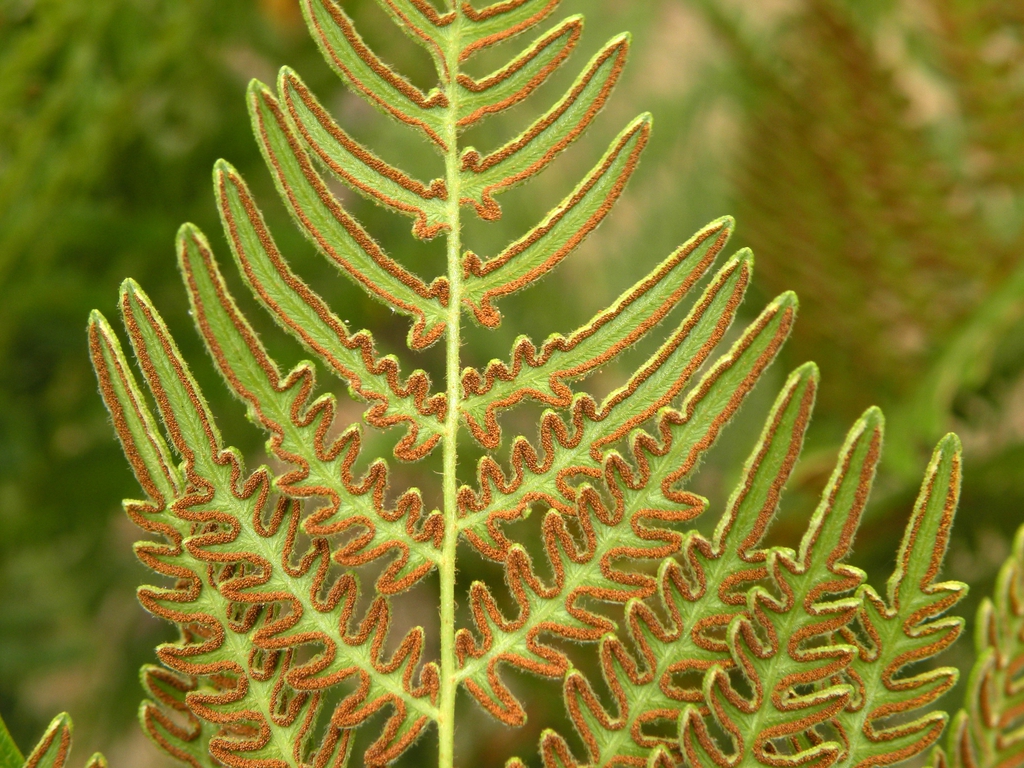Pteridium latiusculum
Common Name(s):
- Phonetic Spelling
- ter-ID-ee-um la-ti-US-kwu-lum
- This plant has high severity poison characteristics.
- See below
- Description
-
This species of bracken is common in the mountains and Piedmont, and less common on the coast (where Pteridium pseudocaudatum is more common).
Medium to high light shade to full sun; acidic, sandy, moist to dryish soil; long-creeping rhizomes
Poison Part: All parts, fiddleheads (curled-up leaves)
Poison Delivery Mode: Ingestion
VIDEO Created by NC State Extension's Homegrown series featuring Mark Weathington, Director of JC Raulston Arboretum.
- Profile Video:
- See this plant in the following landscape:
- Cultivars / Varieties:
-
- Tags:










- Cultivars / Varieties:
-
- Tags:
-
-
Attributes:
- Genus:
- Pteridium
- Species:
- latiusculum
- Family:
- Dennstaedtiaceae
- Life Cycle:
- Perennial
- Recommended Propagation Strategy:
- Division
- Root Cutting
- Country Or Region Of Origin:
- Europe, Northern Asia and Norther Africa
- Particularly Resistant To (Insects/Diseases/Other Problems):
- Deer
- Dimensions:
- Height: 2 ft. 0 in. - 4 ft. 0 in.
- Width: 4 ft. 0 in. - 5 ft. 0 in.
-
-
Whole Plant Traits:
- Plant Type:
- Fern
- Herbaceous Perennial
- Native Plant
- Poisonous
- Woody Plant Leaf Characteristics:
- Deciduous
- Habit/Form:
- Creeping
- Growth Rate:
- Rapid
- Texture:
- Fine
-
-
Cultural Conditions:
- Light:
- Full sun (6 or more hours of direct sunlight a day)
- Partial Shade (Direct sunlight only part of the day, 2-6 hours)
- Soil Texture:
- Loam (Silt)
- Sand
- Soil pH:
- Acid (<6.0)
- Soil Drainage:
- Good Drainage
- Occasionally Wet
- Available Space To Plant:
- 12 inches-3 feet
- 3 feet-6 feet
- USDA Plant Hardiness Zone:
- 3a, 3b, 4a, 4b, 5a, 5b, 6a, 6b, 7a, 7b, 8a, 8b, 9a, 9b, 10b
-
-
Fruit:
- Fruit Description:
- No fruits. This plants reproduces via spores.
-
-
Flowers:
- Flower Description:
- No flowers.
-
-
Leaves:
- Woody Plant Leaf Characteristics:
- Deciduous
- Leaf Color:
- Green
- Leaf Type:
- Compound (Pinnately , Bipinnately, Palmately)
- Fronds
- Leaf Arrangement:
- Other/more complex
- Leaf Shape:
- Deltoid
- Leaf Margin:
- Dentate
- Lobed
- Hairs Present:
- No
- Leaf Length:
- 3-6 inches
- Leaf Description:
- Fronds erect or often inclined to one side, broadly triangular, usually divided into 3 sections, each with small, elongated segments with minute spore-sacs along the margin. The terminal segment of pinnule long and narrow; often 6 to 15 times longer than wide.
-
-
Stem:
- Stem Color:
- Green
- Stem Is Aromatic:
- No
-
-
Landscape:
- Landscape Location:
- Meadow
- Naturalized Area
- Woodland
- Landscape Theme:
- Cottage Garden
- Drought Tolerant Garden
- Native Garden
- Rain Garden
- Design Feature:
- Accent
- Border
- Mass Planting
- Resistance To Challenges:
- Deer
- Problems:
- Problem for Horses
-
-
Poisonous to Humans:
- Poison Severity:
- High
- Poison Symptoms:
- Poisoning commonly occurs in horses having inadequate forage, or when the plant is incorporated into hay. All parts of the plant are toxic in both green and dry forms. The toxic component causes a thiamine deficiency (an essential nutrient for central nervous system function and metabolism); clinical signs develop after one to two months of chronic ingestion, and can worsen over a two to three day period. Effects include weight loss, fever, incoordination/ excessive staggering (known as "bracken staggers"), the developement of a wide stance with arched back, severe muscle tremors, inability to get up which could lead to serious injury. Death may occur within one to 2 days of onset if not treated.
- Poison Toxic Principle:
- Thiaminase inhibitor. Milk from cows that have ingested this fern may be toxic to humans.
- Causes Contact Dermatitis:
- No
- Poison Part:
- Leaves
- Stems






